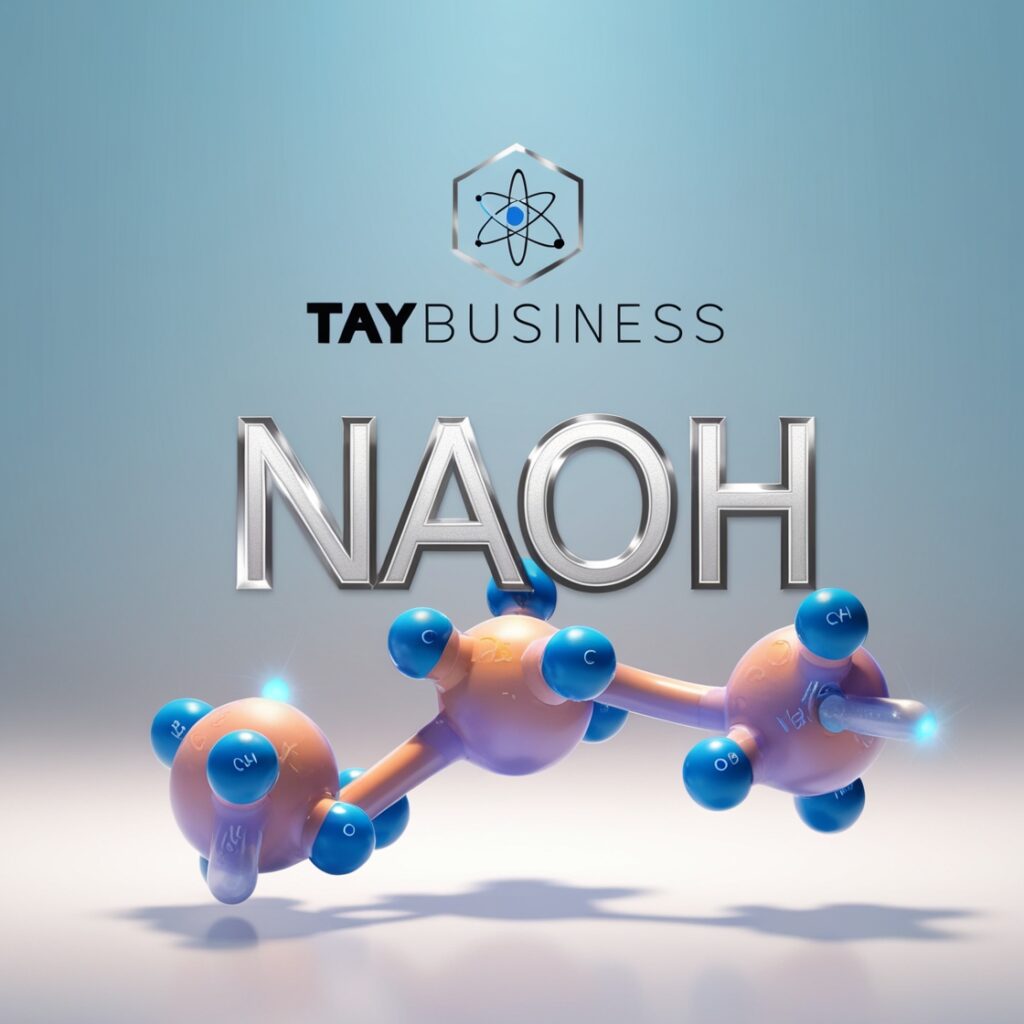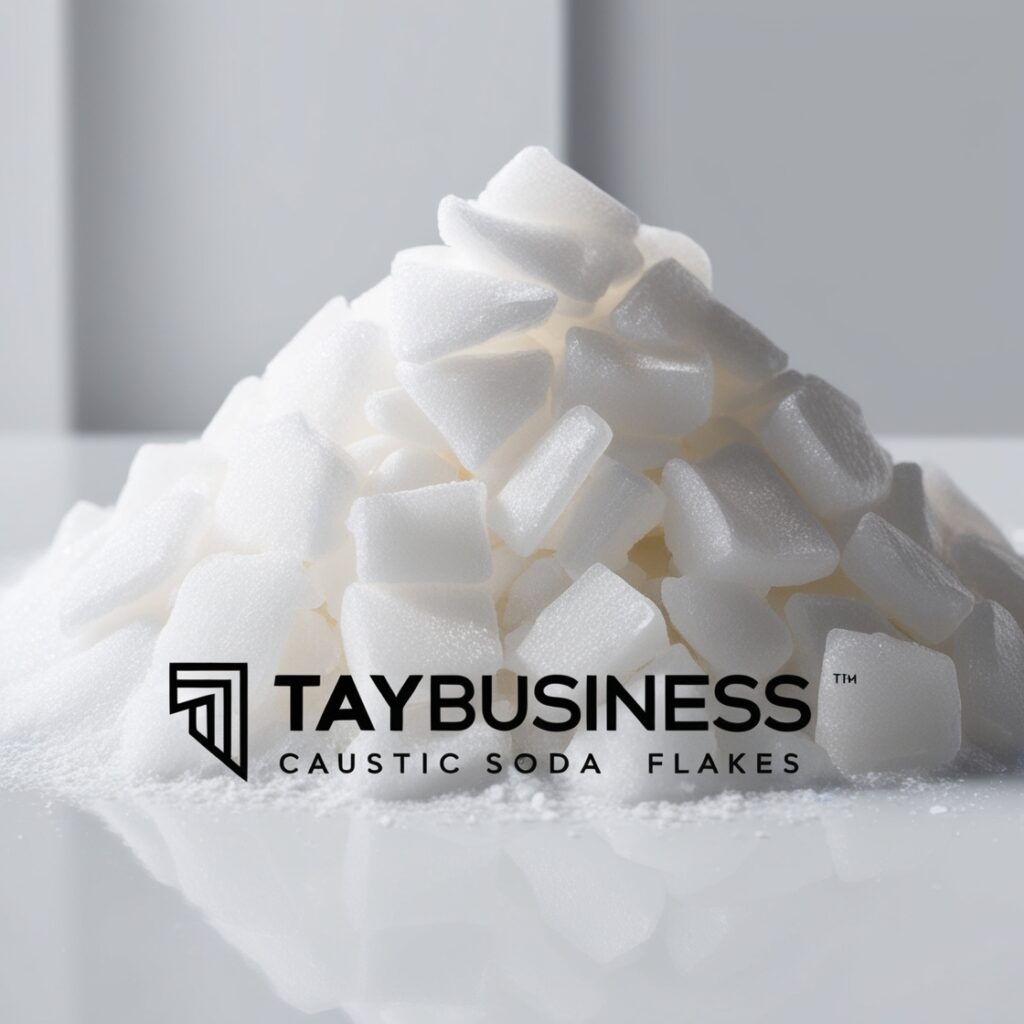Sodium hydroxide, commonly known as caustic soda or lye, is a highly versatile
chemical compound with the formula NaOH. This inorganic compound is widely
used invarious industries due to its strong alkaline properties. It appears as a white
solid, often found in flakes, pellets, or as a concentrated solution. Sodium hydroxide
is known for its ability to dissolve in water, releasing significant amounts of heat
and forming a strongly alkaline solution. This article explores the properties,
production methods, and extensive applications of sodium hydroxide.

Sodium hydroxide is a highly caustic base with a number of important characteristics:

Sodium hydroxide is commonly produced using the chlor-alkali process, which involves the electrolysis of sodium chloride (common salt) solutions. This process simultaneously produces chlorine gas and hydrogen gas as byproducts. The main methods for chlor-alkali production include:
Membrane Cell Process: This process involves the separation of chlorine and sodium hydroxide solutions using a selective membrane. The caustic soda solution produced is relatively pure and free from chlorides.
Diaphragm Cell Process: Similar to the membrane process, this involves a diaphragm that separates the anode and cathode compartments, producing a less concentrated solution of sodium hydroxide.
Mercury Cell Process: This process involves mercury as a cathode, where sodium amalgam is formed and subsequently reacted with water to produce sodium hydroxide and hydrogen.
Sodium hydroxide is a versatile chemical with extensive applications across multiple industries:
Sodium hydroxide is a crucial chemical in the production of various substances, including:
Soaps and Detergents: It is used in the saponification of fats and oils to produce soap. In detergent manufacturing, NaOH helps in breaking down grease and dirt.
Paper and Pulp Industry: Sodium hydroxide is involved in the pulping process (kraft process), where it helps to separate lignin from cellulose fibers, enhancing paper strength and whiteness.
Textiles: It is used in the treatment of cotton fabrics to increase luster, strength, and dye affinity.
In water treatment plants, sodium hydroxide is used to control pH levels, ensuring that water stays within safe parameters for distribution and consumption. By neutralizing acidic components, it helps in the clarification and softening of water.
In the petroleum industry, sodium hydroxide is used in the refining process. It helps in the removal of acidic impurities from oil derivatives, improving fuel quality and efficiency. Additionally, it aids in the extraction process through its use in drilling muds.
Sodium hydroxide is utilized in the food industry for various purposes, such as:
Peeling of Fruits and Vegetables: It acts as a peeling agent, especially in the processing of potatoes and tomatoes, streamlining the removal of skins.
Chocolate and Cocoa Processing: It is used to process cocoa beans, enhancing flavor and improving color.
Softening Olives and Other Foods: In some traditional food preparations, sodium hydroxide is used to soften food products, like the curing of olives.
Drain Cleaners: Due to its capability to break down organic materials, sodium hydroxide is a key ingredient in many drain and oven cleaners.
Industrial Cleaners: It is used in industrial cleaning solutions for degreasing and cleaning heavy machinery and equipment.
In the pharmaceutical and medical industries, sodium hydroxide is used in the synthesis of various drugs and intermediates. It plays a role in pH regulation and the formation of certain compounds in drug manufacturing.

While sodium hydroxide is an essential chemical with diverse applications, it requires careful handling due to its highly corrosive nature:
Protective Gear: Individuals handling sodium hydroxide should wear protective clothing, gloves, and eye protection to prevent skin and eye contact.
Storage: NaOH should be stored in a cool, dry place, away from acids and moisture, to prevent hazardous reactions and degradation.
First Aid: In case of contact with skin or eyes, it is crucial to rinse immediately with plenty of water and seek medical attention. Ingestion or inhalation of sodium hydroxide solutions can be extremely harmful and requires prompt medical treatment.
Sodium hydroxide, with its robust chemical properties and diverse range of
applications, is a cornerstone in industrial manufacturing and household products.
Its role in the production of essential goods and services highlights its importance
in modern society.
However, due care must be taken in its use to ensure safety and environmental
protection, underscoring the balance between industrial utility and responsible
handling.
